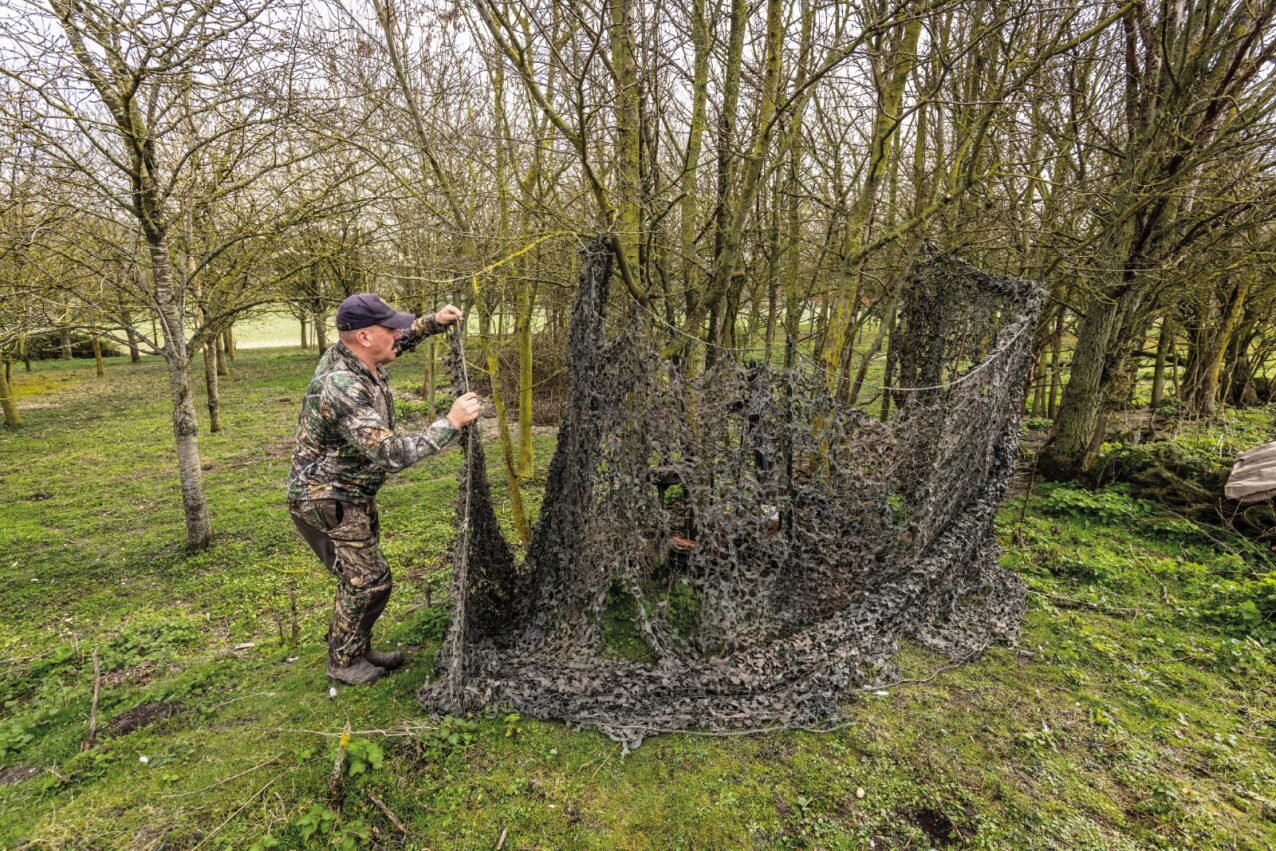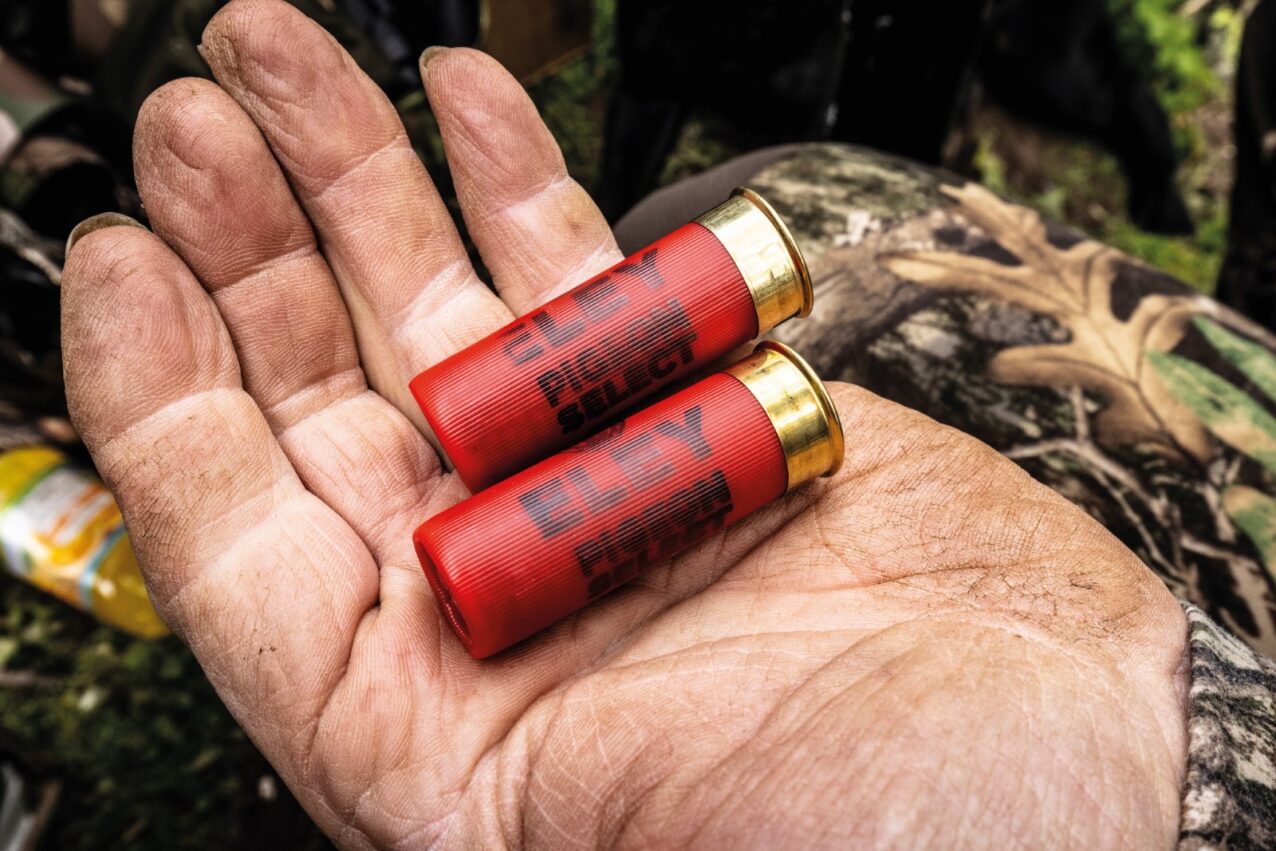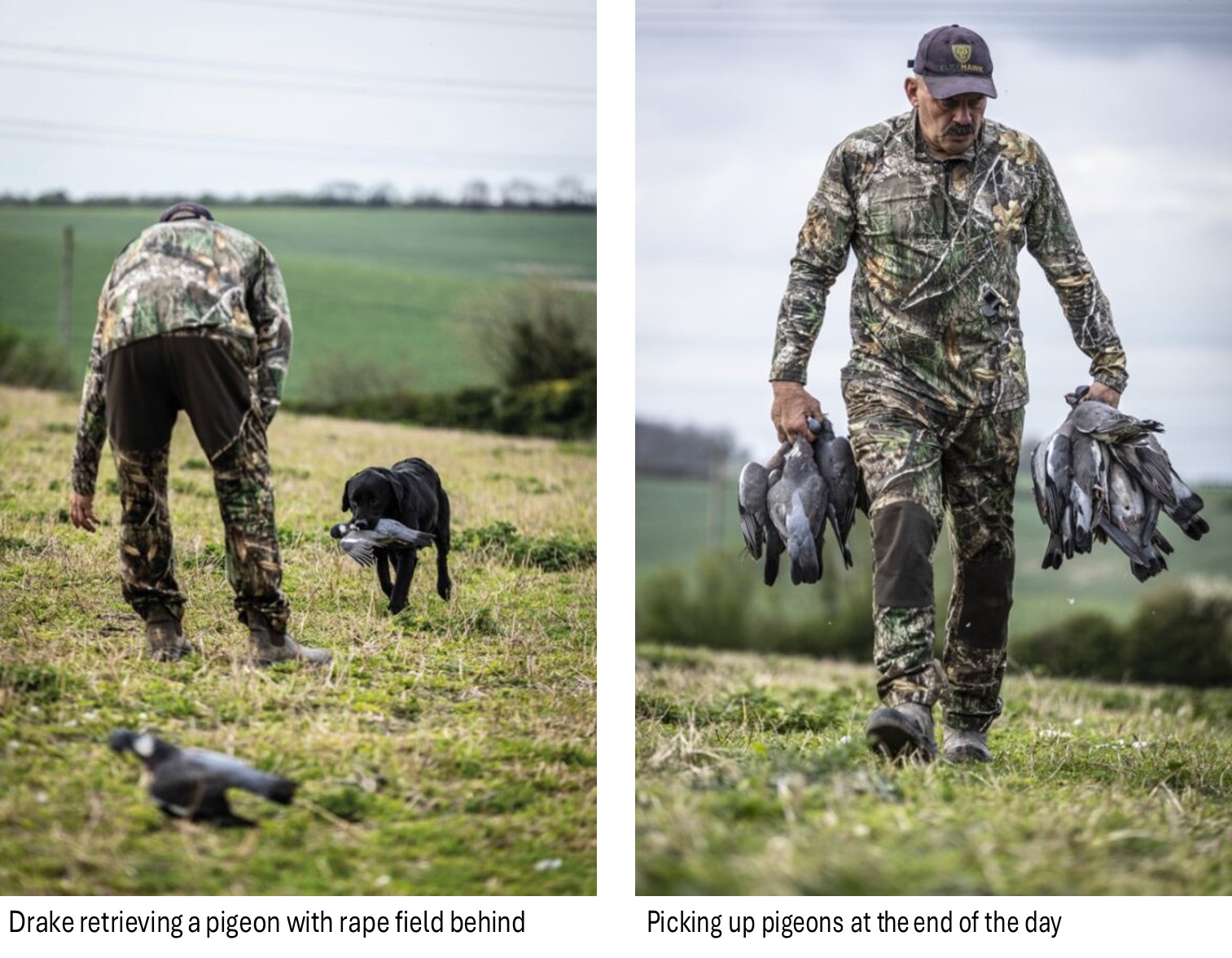Armed with 40 years’ experience of the land, Geoff Garrod devises a plan to intercept pigeons on their flight lines – but the birds have other ideas
I mentioned in my previous article that the pigeons are well and truly back. Shortly after that very successful day’s decoying, when I bagged 149 pigeons,
I went away on holiday for two weeks. I’m glad to say that despite my worries that the flocks might move on, they all seem to be in the area still – much to the farmer’s despair! There are now plenty of gas guns out in the fields and I’m under pressure to get out and reduce the flock’s numbers – which I’m happy to do as pigeon shooting is my hobby and passion.
I sometimes wonder whether I should be so pleased that we have large numbers of wood pigeons in the area, as I work alongside the farm on the estate. But decoying is great sport and is very beneficial for crop protection, so why shouldn’t I enjoy my job? It’s a win-win as far as I’m concerned.
After a good scout around the farm it was clear that the biggest flock of perhaps 1500 pigeons was settled and feeding on rape on the outskirts of a nearby village. It was a spot where there was no way I could shoot safely or without disturbing local residents, and there was also a regularly used footpath and railway line for good measure. It simply wasn’t going to be possible to shoot in that location, but I know every flight-line around here and had a plan.
Just after I returned from holiday I got a call from the land agent for the estate, asking if he could pop over to the house for a chat.
I started to think there might be something wrong, but it turned out that he was bringing me over an engraved boot puller to mark the anniversary of me arriving at the estate as a young lad 40 years ago.
It was a very nice touch and one I hadn’t been expecting. But my point is that I have spent more hours than I care to think about watching pigeons feeding and traversing the estate, and the vast majority of the time these routes have stayed the same since I started working here. This intimate
knowledge enabled me to work out a plan to get to some of the feeding flock.
 Not the ideal spot but it will have to do
Not the ideal spot but it will have to do
Lie of the land
The rape field that was being damaged by the pigeons is a long shallow valley with village houses and the railway at one end and roads running up the other two sides. The footpath runs along the edge of the field by the houses and track, and the pigeons were feeding about 100m into the field at the bottom of the valley.
There are two main flight-lines into the field in regular use. The first is from the north, where there is a small wood about 500m away, and the second from the south, from a wood and the town across the river.
Many of the pigeons visiting the field from the south were dropping off on a field of legume mix that the farm has in one of its schemes and is a crop that needs protecting. This field is again around 500m from the rape. Most afternoons it’s blue with pigeons, either sitting in a belt of cherry trees or out on the field picking up some clover for desert after their main course of rape. The flight- line from the north has a similar situation.
The pigeons use the small wood to sit in and digest their meal.
The plan was to get a friend over to set up somewhere near the wood and I would set up a hide on the legume field. It was unlikely that the pigeons would decoy particularly well, but the hope was that we could both get the flight-line to pass over the decoys and get plenty of shooting that way.
 The odd crossing pigeon get the Geoff treatment
The odd crossing pigeon get the Geoff treatment
After taking my friend up to the small wood and giving him free reign to place himself where he thought best, I headed back to my chosen location. As I came up over the brow of the hill to the field, a massive flock of pigeons took to the air and set off in the direction of the town as expected. My hope was that they would start to filter back to the legume field or continue on to the rape field in small groups.
 Eley Pigeon Select cartridges
Eley Pigeon Select cartridges
Tricky situation
The perfect spot for the hide would have been right in the corner of the field with my back to the belt of cherry trees, but that
would have been just a bit too close to some other houses. This is the type of challenge that decoyers face all too often.
I set up my hide with a hawthorn bush to my rear and the belt of cherry trees running along behind me. I didn’t have any real pigeons for decoys, which is what I always prefer, so I put out my plastic full-bodied decoys, planning to replace them with real ones as they fell to my gun.
 Watching the flightline change behind the hide
Watching the flightline change behind the hide
Even before all of my decoys were set out I had pigeons trying to drop in to the pattern. I shot about five in no time at all and they were placed in cradles in the pattern. Then things changed. The flight-line shifted about 100m to my right, over the corner of the village. I was still getting the odd bird looking at the decoys and the bag was ticking up slowly, but it was incredibly frustrating watching large numbers of birds head straight to the rape field. They were playing follow-my-leader straight to the scene of the crime and there was nothing I could do about it.
It was a frustrating few hours watching masses of birds pass by without any chance of getting a shot at them. Frustration then got the better of me and I decided to stand in the trees behind the hide and shoot any pigeons that came into range over the trees, making sure that I kept the shooting in a safe direction and away from the village. This helped to build the pattern and I hoped that with more birds in cradles in front of the hide I’d be able to pull the flight-line back towards me by a few metres.
 Some challenging shooting but an average bag
Some challenging shooting but an average bag
Welcome improvement Eley Pigeon Select cartridges
Things started to pick up and the bag was slowly but steadily growing. I was certainly earning every bird and it was challenging shooting. Most birds were just looking at the decoys on their way to the rape rather than committing to land, so it was a day of long passing shots – great sport but a little slower than I’d hoped.
I could clearly see where the bulk of the pigeons were landing in the rape field, and as the day passed they started to move up the hill towards one of the pylons that cross the field. As annoying as it was seeing so many birds in the distant field, their moving up the field and away from the village was a good sign, as that was a location where I could set up a hide and perhaps catch them out on another day. On this particular day, though, they were being tricky.
At around 15:00 the pigeons that had fed started to trickle back to my field and into the cherry trees behind. One or two were even obliging enough to fly into the decoy pattern and for an hour or so I was getting regular shooting. This day certainly hadn’t been a waste of time and I did finally pick up 53 birds, but if I’d been able to shoot in the rape field by the village it could have been a red-letter day.
The only lesson I learned from the day is that pigeons are tricky on some days and when they’re feeding in inaccessible places you just have to make the best of a bad lot – but 53 wasn’t too shabby in the circumstances. Let’s hope the pylon proves to be my saviour on that particular field in a week or so!
